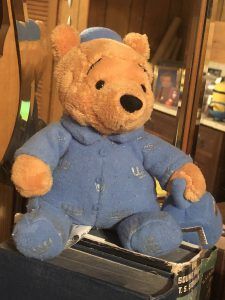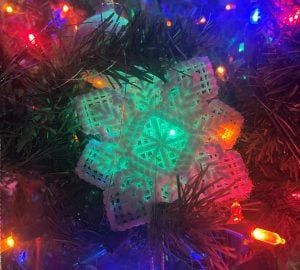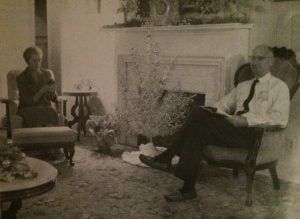In Plain Sight

Several years ago, my son and daughter-in-law had gone Christmas shopping in search of, among other things, something for me. Now, some folks will tell you I’m hard to buy for. Those are the people who don’t know me. The rest know you can write a check to a charity or walk into a Disney Store or antique shop and pretty well be set. Needing one more small something, they chose the Disney option because they know I am a fan of most things Disney and all things Pooh . . . as in Winnie the.
They wandered about the store, examining those items they thought might appeal to me while also appealing to their Christmas budget. At last they settled on a cute little stuffed Winnie the Pooh dressed in blue pajamas and wearing what appeared to be a nightcap. After all, I didn’t have a Pooh in jammies so this one would add a unique member to my growing collection. They took their intended purchase to the cash register and handed it to the Cast Member (‘cause Disney doesn’t have sales clerks . . .). As she scanned him, the description popped up on the screen of the register.
“Hanukkah Pooh.”
They looked at each other then looked back at Winnie in his p.j.s and then burst out laughing. Those cute little designs on his jammies? Those were menorahs—the seven or nine branch candelabra used in Jewish religious ceremonies. That nightcap? It was a yamacha, the round cloth worn as a head covering by Jews. And that chunky little thing he was holding in his hand . . . or paw? A dreidel. A four-sided spinning top that is generally played with during Jewish holidays.
All the clues were there. In plain sight. And they missed every one of them until it flashed before their eyes on the digital read-out of the cash register. I still got my Winnie the Pooh in his “pajamas”, and we all had a good laugh over the story of how he came to live with me.
Now, re-read the first two and one-half sentences of the previous paragraph. All the clues were there. In plain sight. And they missed every one of them . . . I cannot begin to tell you how many times family members and friends have uttered almost those exact same thoughts, word for word, when someone they love chose to end their life. Looking back, they can see every sign that pointed toward that outcome. Key words here— looking back. “Hindsight is 20/20” is an old saying for a reason. It’s true. Often those telltale signs are so subtle, so insignificant when viewed alone, that the overall picture never forms. No one should ever hold themselves accountable for only piecing together the puzzle after it’s too late to change the end result—but, being human, that’s exactly what we do. Not only do we hold ourselves accountable but we also think we could have changed the outcome—if we had only realized the significance of what we were seeing.
When someone takes their own life, the shock waves are almost endless as is the blame that’s thrown at anyone close by. The grief is greater because of the manner of death, and the questions that arise are more emotionally charged than they might otherwise be. But in the midst of the mental and emotional chaos, while we ponder what we could have done to prevent this unthinkable act, there must also be forgiveness—forgiveness for the one who chose to die and for ourselves for not recognizing their struggle.
The post In Plain Sight appeared first on Shackelford Funeral Directors | Blog.












